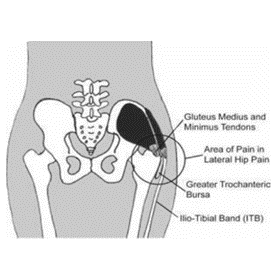Exercise and restoring normal movement and strength
As your pain and inflammation settles, you will need to restore your normal hip joint movement, muscle length, and strengthen your muscles to improve control, endurance, balance and gait (walking pattern).
Exercises that may help:
- Lying face down, squeeze your buttocks strongly together. Hold for 10 secs.
- Lie face down. Tighten your stomach muscles and your buttock muscles and keep your hips down. Lift one leg slightly off the floor. Hold for 5 secs.
- Lying on your back with knees bent. Squeeze your buttocks together and lift your bottom off the floor. Return to starting position.
Return to function
The final stage of your rehabilitation is aimed at returning to your desired activities. Everyone has different demands for their hips that will determine what specific treatment goals you need to achieve. For some people, it may be simply to walk around the block. Others may wish to run a marathon. There are some general principles to follow:
- Don’t start at the same level as before your injury. Build back to your previous level slowly and stop if it hurts.
- Warm up before you exercise.
- Continue with hip stabilisation exercises to prevent a recurrence.
- It is important to look at your lifestyle and make changes to try to prevent reoccurrence. Weight loss and a general increase in activity if appropriate can both be helpful.
If these steps don’t help, a physiotherapist will tailor your hip rehabilitation to help you achieve your own functional goals. It can take weeks or months to fully rehabilitate GTPS.
Be patient and stick with your treatment. If you try to do too much too soon, it can lead to more pain and reduced function.
